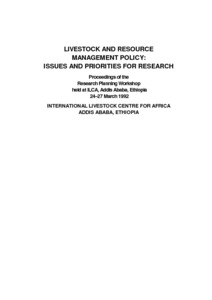Plant breeding and the nutritive value of crop residues. Proceedings of a workshop
Presents papers dealing with the use of crop residues as livestock feed in smallholder crop/livestock farming systems, and the role of plant breeding in maintaining or improving their nutritive value. Discusses factors limiting the nutritive value of crop residues, and the effect of genotype and environment on the nutritive value of crop residues. Outlines perspectives and implications for crop improvement programmes. Includes recommendations.









